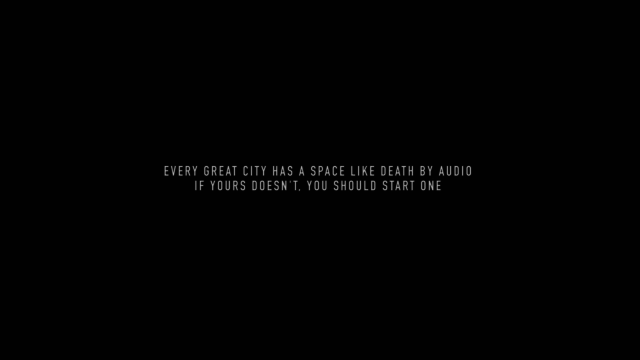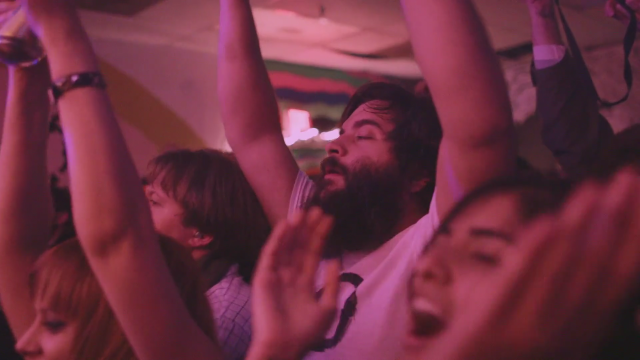
After beginning with the suggestion that “This movie should be played loud,” (and with its frequent concert footage, it certainly couldn’t hurt), Death By Audio documentary Goodnight Brooklyn: The Story of Death By Audio opens on a scene you might recognize. DBA resident Stephanie Gross explains to the hopeful crowd, in a line stretching around the block, that they probably won’t be able to get in to the already packed last show ever held at the venue on Nov. 22, 2014. No one leaves though, holding out hope that they can say goodbye and take part in a small piece of Brooklyn history. What could possibly inspire people to stand on a line in the cold with almost no hope of getting into a hand-built music space?
From 2007 to 2014, DBA was Brooklyn’s most beloved DIY space, equally adored by concertgoers and musicians thanks to an attitude that welcomed experimentation, loudness and good times on the cheap and without regard for profit. Everyone was waiting in that line with the hopes they could say goodbye to the space that was, in an ironic twist, being replaced by the new headquarters for Vice, a contentious relocation that also displaced follow Kent Avenue waterfront venues Glasslands and Indiescreen and circus school The Muse.
Part concert film, part Vice indictment and part love letter to Brooklyn’s DIY community, Goodnight Brooklyn tells the story of one of the borough’s most beloved concert spaces. Before the film debuted yesterday at South by Southwest, we talked with director Matt Conboy, who began living at DBA while making effects pedals in 2007 and stayed in the space until 2014 about the rapid changes in Williamsburg, avoiding a nostalgia crutch, inspiring future venue builders and the state of DIY in Brooklyn today.
___________
Goodnight Brooklyn goes back to Death By Audio’s beginnings as a cheap space for a pedal company. It relies on testimony from pedal company founder Oliver Ackerman, sound man/venue manager Edan Wilber (pictured at the top of this post, getting transcendent), Conboy, DBA employees and residents and a host of bands that played and loved the space, along with plenty of concert footage from the venue’s last month of shows.
What had once been an abandoned warehouse where the $5 people paid to get into shows was used to help construction of a living space in the back eventually transformed into a community that provided space for performers like Lightning Bolt, Jeff The Brotherhood, Dan Deacon, Les Savy Fav and Ty Segall. You’ll be able to see it in Brooklyn eventually (screening plans are still coming together). Conboy tells us how the project got started:
When did you start filming the documentary? When the closure was announced?
We found out that the space was going to have to close and my producer immediately convinced me this was something we needed to film. It took us a couple months to plan everything out and get everything lined up. We ended up starting to film in earnest around October [2014]. So we filmed for six weeks. I filmed some stuff before that, myself with my camera if something happened in the space. But we didn’t really start in earnest until October.
Some of the footage is from two documentaries. One of them is called Fuzz and it’s a documentary about effects pedals. This guy came to our space and filmed in 2008, and he was nice enough to give me his footage and I incorporated it into some of that stuff. And then there’s also footage from an unreleased documentary by this couple who are artists and filmmakers and basically filmed off and on in 2007 and 2008, just kind of showed up with cameras and said, “This is interesting! We don’t know what we’re gonna do with this,” and they were also nice to give me their footage as well.
When did you first get to Williamsburg? And given the rapid changes it underwent even from when you moved in to DBA in 2007, can you give a sense of what it was like when you showed up?
I moved to Williamsburg in 2002 or 2003. My aunt and uncle had lived in New York since the 80s and they had an art studio not far from where Death By Audio was, and I remember visiting them in the late 90s/early 2000s. It felt super abandoned and empty and a little bit scary, but also full of opportunity. And I think that Williamsburg in general kind of felt like that somewhat, just like the Wild West. That was what was so cool about it, was you were in a seemingly desolate area but you can literally see Manhattan from the waterfront. So it just felt like a crazy, weird, special thing. Now it’s become a very developed, very wealthy, very commercial part of New York. It’s not unlike what’s happened in SoHo, where you had a lot of derelict, empty space that artists came to and now it’s where the Prada store is.
___________
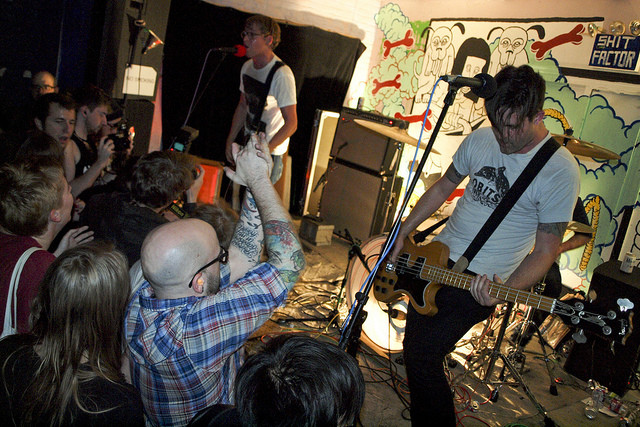
So there’s a scene when you’re driving around Williamsburg and you talking about how you and your friends represented huge changes to the neighborhood in the eyes of the people who lived there before you. Is this creation/destruction a cyclical thing or is this particular change somehow different?
It’s a little weird, because we didn’t kick anyone out of anywhere. Where we ended up building our community was a disused portion of the Domino Sugar Factory (which sat across the street on Kent Avenue – ed.), and we came in and took over the aftermath of failed American manufacturing.
Creative people and poor people are often one in the same, and it doesn’t have to be this acrimonious thing. I think our capitalist society doesn’t draw any distinctions between these groups of people, it’s just “You’re poor and in the way,” and I think if we can see that, there’s some power to be gained from that commonality.
Also during that scene you mention not wanting to be a guy who just talks about how things were great when he was younger. Is there a balancing act between telling the story of DBA and turning it into an empty nostalgia delivery system like we’ve got with CBGB and the 70s/80s underground in the city?
I definitely was aware of that and trying to avoid it. I hope that the movie is a document of a specific place and time, but it’s not like “Oh this is the best time ever.” So long as there are creative people doing interesting stuff, it’s not gonna be any better in the past than it is now. New York City by definition is evolving and sometimes that’s for the better or the worse depending on your perspective, but I personally am psyched, I know so many people who are doing awesome stuff all the time. And that doesn’t seem to be disappearing, even if it’s a little bit harder for some of them, for some of us.
___________
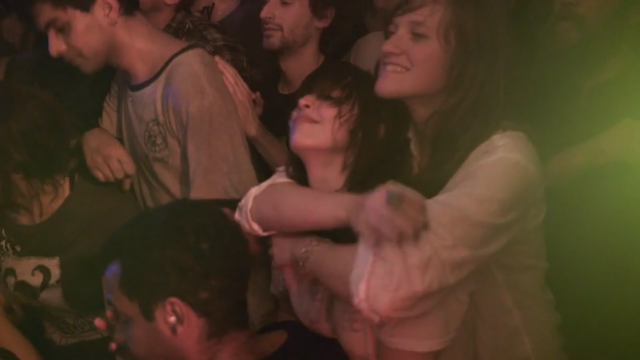
Vice or no Vice, was there a shelf life for creative venues like DBA/Glasslands/285 Kent, with the Domino Sugar condos being built?
From the beginning we figured “Oh Death By Audio’s only gonna last six months or a year,” it was constantly under threat of closing for any number of reasons. I don’t know if I could put my finger on a specific time, but by 2012 or something it was like “Oh wow, this neighborhood is very different.” There used to be an empty pit across the street from the building and someone built condos there and then a whole bunch of people moved in and a lot of them don’t go to DIY venues and didn’t give a crap about music or art. Fortunately, we went out of our way to be friendly and always had a good relationship with our neighbors, because if you don’t have that, you’re not gonna stay open. I don’t know if that answers your question or not.
___________
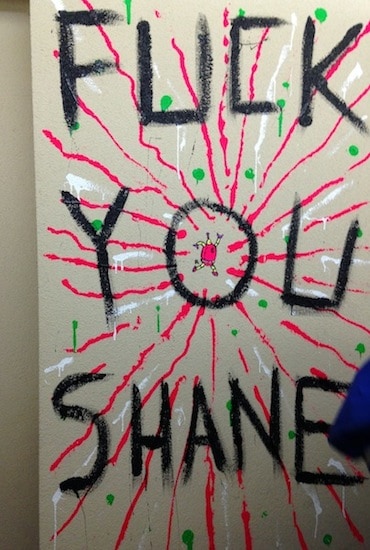
I just remember being at 285 Kent or Glasslands and looking around at the crowd outside and thinking that there was no way the future people in these crazy looking luxury condos across the street would think “Yeah we want to live across the street from loud rock venues.” The way Vice went about the construction, especially all the water spilling everywhere, became a contentious issue, and the “Fuck You Shane” mural also did for some reason. Is it weird, or does it hurt more that it was Vice taking over the building as opposed to it becoming the Williamsburg Whole Foods or another Chase branch?
A little bit, just because we all expected our landlords to sell the building to someone who would demolish it to build condos. I think we almost would have preferred that because it would totally erase the building and make way for something else. Having it be Vice was super ironic, and incredibly frustrating that this company that pretends to care about this community and this culture and when put to the test of showing how they feel, they don’t care at all and are incredibly dispassionate, vicious capitalist douchebags about the whole thing.
I’m fortunate that I got to make this movie and it was a cathartic experience for me, and I’m not harboring a lot of anger or resentment. But I know some people in my community are, and it sucks. And unfortunately, they still have refused to pay for any of the stuff of ours that they damaged. And that’s one of the frustrating things for me. They won, and they have unlimited money, and they’re too spiteful to even pay for my roommate’s computers that they flooded. Really, they can’t even do that?
___________

Do you think it was spite or do you think they were a big corporation and it didn’t cross their balance sheet or their mind?
It’s probably both. From my life, I know many people who work there and who have worked there and I know for a fact they’re aware of this. I would feel better in a sense if it was “Death By What? Never heard of it, who gives a shit?” But I have personally given a tour of the space to one of the founders of Vice. They definitely know.
Do you think they feel weird about the whole thing and were just trying to do an out of sight, out of mind kind of thing?
Probably. And the people making the bigger decisions for this kind of thing, maybe they don’t know [what Death By Audio is]. I can’t pretend to be able to analyze all their internal stuff. I know it’s frustrating for me, I have friends who work there who’ll post on Facebook “Oh watch this trailer, it’s such a great story I’m so emotional, I love Death By Audio” and five hours later will be like “Check out this thing I made for Vice, my company is so amazing!” I don’t think you can do that.
Jeez, I guess I should say I’ve done some things for Vice Sports.
Dude it’s fine, I don’t care, I have friends of mine who’ve done freelance things there. I’m not mad at anybody for working with Vice. They’re a huge company, and I get it, I would never be upset. I just feel like you either have to be like “I don’t give a shit” or “I do care but I’m not gonna talk about it because I’m making the choice to take this job,” because that’s everyone’s ethical thing to ask themselves. Anybody has the right to do whatever they want, I’m not gonna be mad at anybody, but it just feels kind of disingenous to try and be on both sides of the fence.
Did you try to talk to anyone from Vice for the movie?
I thought about it and that was something we were toying with. But the film isn’t about them, it’s about our community and I just felt like it would be the wrong move to make the movie more about them than was necessary. I didn’t want to go down some road of trying to like, ambush [Vice co-founder] Shane Smith as he was getting out of his BMW.
___________
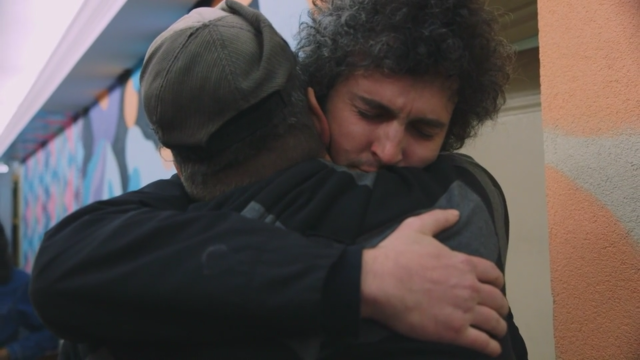
How do you think DIY in Brooklyn, and the city in general, is doing these days?
I think it’s evolving. I’m really psyched there are people in places like Silent Barn and Secret Project Robot kind of continuing this lifestyle and community. It’s definitely a little more difficult to build, just because of the way New York City is going. It would be harder to open a new venue, if we were going to try to do that. If you can’t scrape it together with your friends, it’s not gonna happen, and so I’m a little concerned about that. But creative people figure out ways to do stuff that’s amazing and surprising. So I’m not worried on that front, because there’s creative awesome people doing cool stuff all the time.
I talked to Mark Kleback last week about his Death By Audio arcade gallery show, and he said that he feels like Death By Audio’s energy dispersed rather than died. Do you feel the same way?
Yeah, and Mark is a perfect example of someone who I’m so happy I know now. He’s so smart and driven and doing all this cool stuff, and I got to see him develop into the person he is now at Death By Audio. He moved in with us, he was in his early 20s and it was so awesome to see this guy take advantage of all these tools and get excited about what’s going on, and that’s carrying on with him to this day.
Most, if not all of our friends from that world are doing cool stuff. Oliver is doing a pedal building workshop and playing this crazy big festival in Mexico. Everyone’s doing all this cool stuff, it just so happens we don’t live together anymore. Maybe the spirit that connected us all is still living in everyone. Even me making this movie is the same as all that stuff, and hopefully people will be excited about and inspired by and do their own thing.
Do you see DBA’s spirit other places in the city?
We’re not the only people doing this stuff. Secret Project Robot and Silent Barn definitely have that vibe. Shea Stadium,Trans Pecos. They’re all different, none of them are exactly the same, but it’s definitely the same feeling, the same energy of positivity and creativity.
So is the aim of the movie as much about memorializing the space as it is trying to inspire other kids?
That would be the best thing ever, that would be my dream, for some lonely, isolated 14-year-old girl living in the middle of nowhere finding this movie and it being part of some tool to help her realize “Oh I can build my own community and can make something interesting.” That would be great if that happened, I would be so psyched.
___________
Goodnight Brooklyn premiered at SXSW and a plan for wider release is being put together as of the publication of this interview
Follow Dave for more hope, inspiration and positivity at @DaveCoion.
More Death By Audio Coverage:
–Vice calls Death By Audio liars
–Brokelyn’s exclusive look at the living space behind Death By Audio
Leave a Reply

